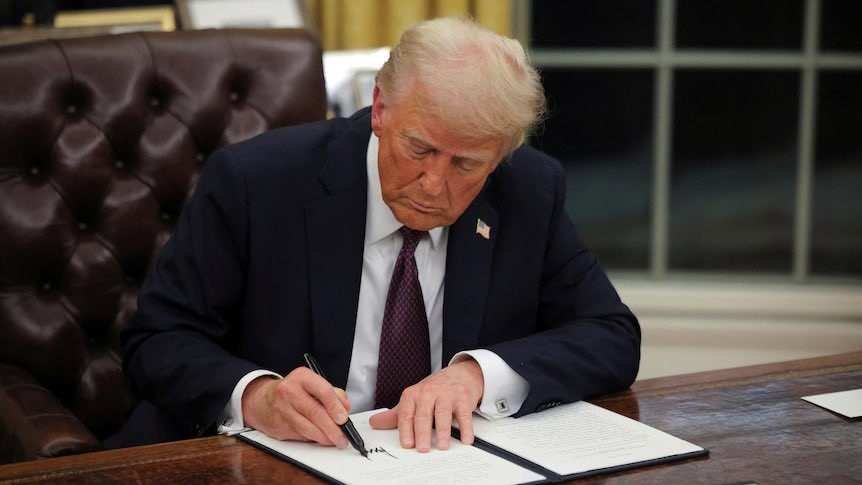In a bold move that could reshape North American trade dynamics, President Donald Trump signed an executive order on Saturday imposing significant tariffs on goods imported from Mexico and Canada, as well as a separate tariff on Chinese imports. The tariffs include a 25 percent levy on most goods from Mexico and Canada, and a 10 percent tariff on imports from China, raising concerns about a potential trade war that could disrupt over $2.1 trillion in annual trade.
The tariffs are part of Trump’s strategy to address illegal immigration and the smuggling of fentanyl, a potent synthetic opioid that has contributed to a public health crisis in the United States. “This was done because of the major threat of illegal aliens and deadly drugs killing our citizens, including fentanyl. We need to protect Americans, and it is my duty as President to ensure the safety of all,” Trump stated after signing the order.
The White House clarified that while energy products from Canada would incur a 10 percent duty, Mexican energy imports would face the full 25 percent tariff. Additionally, the U.S. will eliminate the “de minimis” tariff exemption for small shipments valued under $800 from Canada, further tightening trade regulations.
In response to the U.S. tariffs, both Canada and Mexico quickly announced countermeasures. Canadian Prime Minister Justin Trudeau revealed that Canada would impose 25 percent tariffs on approximately $106.5 billion worth of U.S. goods. Trudeau expressed disappointment over the situation, stating, “We did not want this to happen, but Canada is prepared.”
Trudeau’s government is set to implement these tariffs starting February 4, and he emphasized the importance of collaboration and dialogue with both Mexico and the United States. “I’ve met with the Premiers and our Cabinet today, and I’ll be speaking with President Sheinbaum of Mexico shortly,” he tweeted.
Mexican President Claudia Sheinbaum also responded firmly, instructing her economy minister to implement both tariff and non-tariff measures to protect Mexico’s economic interests. Sheinbaum reiterated that her government does not seek confrontation with the U.S. but rather aims for cooperation and dialogue.
China, facing its own set of tariffs, has vowed to defend its trade interests. A spokesperson for the Chinese embassy in Washington remarked, “There is no winner in a trade war or tariff war, which serves the interests of neither side nor the world.” This statement reflects China’s cautious approach as it navigates the escalating trade tensions.
The tariffs are expected to have far-reaching implications for businesses and consumers across North America. Experts warn that the increased costs associated with tariffs could lead to higher prices for American consumers, potentially impacting everything from groceries to electronics. The move also raises concerns about the stability of supply chains that rely on cross-border trade.
The White House has indicated that there will be no exemptions from the tariffs, and a mechanism is in place to escalate the rates if Canada, Mexico, or China retaliate against U.S. goods. This could lead to a cycle of retaliatory measures that further complicates trade relations.
Trump’s administration has framed the tariffs as a necessary step to pressure foreign governments into cooperating with U.S. efforts to combat drug trafficking and enhance border security. The administration argues that these measures will also boost domestic manufacturing and increase federal revenue.
As the situation unfolds, the potential for a full-blown trade war looms large, with businesses and consumers alike bracing for the economic fallout. The stakes are high, and the outcome of this trade dispute could have lasting effects on the relationships between the U.S., Canada, Mexico, and China.
In summary, President Trump’s imposition of new tariffs has ignited a wave of retaliatory measures from Canada and Mexico, while China has also signaled its intent to protect its trade interests. As tensions rise, the implications for North American trade and the broader global economy remain uncertain.








